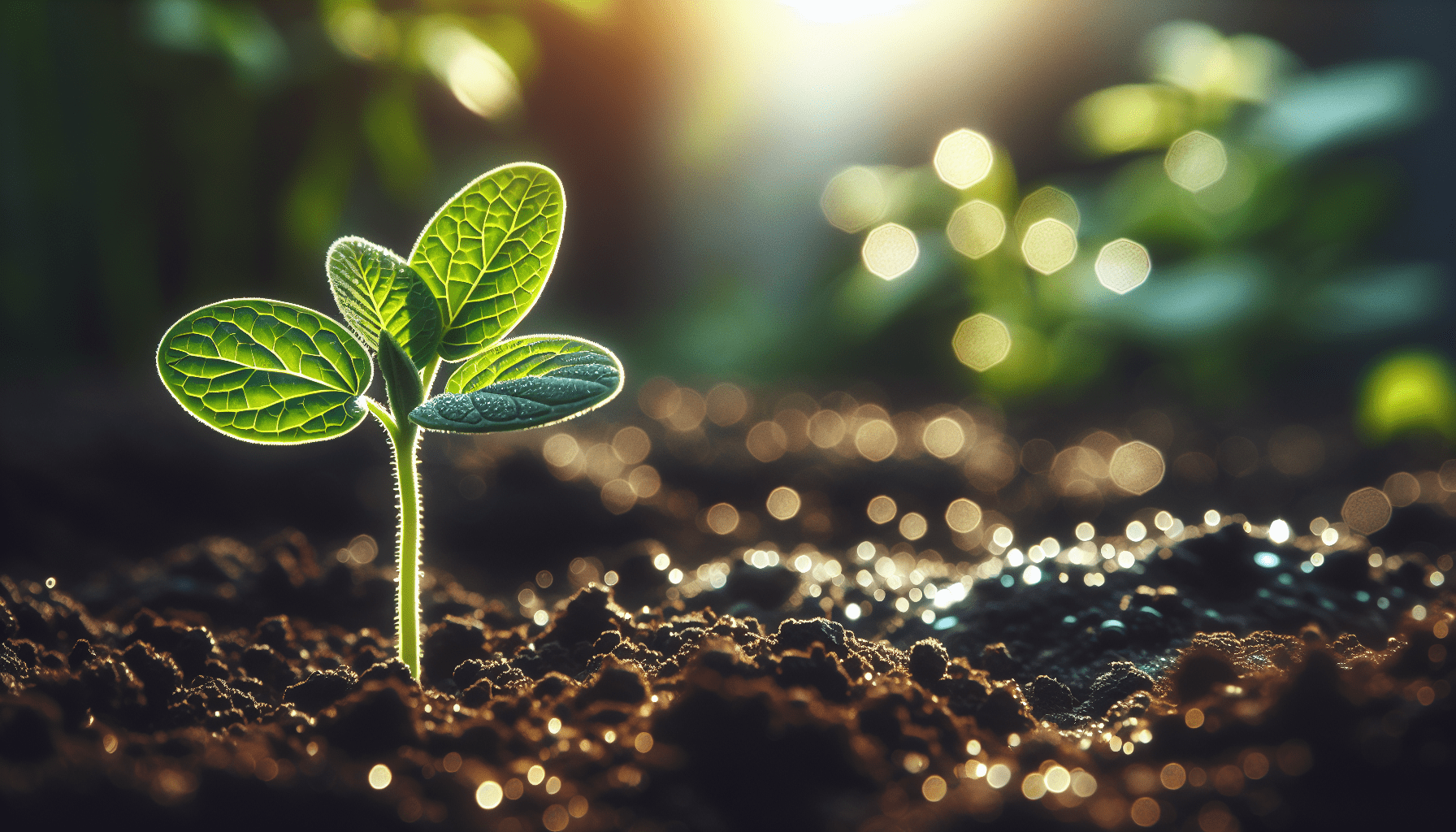This post may contain affiliate links which means I may receive a commission for purchases made through links. Learn more on my Private Policy page.
Welcome to your go-to guide on “Best Practices For Seedling Nutrition Management.” In this article, you’ll explore the essential methods and tips to ensure your seedlings thrive from the very start. You’ll learn how to provide the right balance of nutrients, maintain proper watering techniques, and create an optimal growing environment. By following these best practices, you’ll give your plants the strong foundation they need to grow into healthy, resilient specimens. Whether you’re a novice gardener or an experienced horticulturist, this guide is tailored to help you succeed in nurturing robust seedlings. Have you ever wondered what it takes to ensure that your seedlings grow into strong, healthy plants? Managing seedling nutrition effectively can make a world of difference. Whether you’re an avid gardener or just starting your journey, understanding the intricacies of seedling nutrition can set you on the path to success.
Best Practices for Seedling Nutrition Management
Understanding Seedling Requirements
Before diving into the specifics, it’s crucial to understand what seedlings need in their early stages. Generally, seedlings require a balanced mix of nutrients, water, light, and the right environmental conditions to thrive.
Essential Nutrients
Seedlings need three primary macronutrients: Nitrogen (N), Phosphorus (P), and Potassium (K). These elements are crucial for various physiological functions.
- Nitrogen (N): Essential for leafy growth and overall development.
- Phosphorus (P): Important for root development and energy transfer.
- Potassium (K): Helps with overall plant health and disease resistance.
However, seedlings also require micronutrients like Calcium (Ca), Magnesium (Mg), and Sulfur (S), albeit in smaller amounts. Don’t forget the trace elements like Iron (Fe), Manganese (Mn), and Copper (Cu). Each plays a unique role in plant development.
Soil and Growing Mediums
The foundation of good seedling nutrition lies in the quality of the soil or growing medium. Selecting the right medium can provide the necessary nutrients and create a conducive environment for growth.
Types of Growing Mediums
- Soilless Mixes: Typically composed of peat moss, perlite, and vermiculite. Ideal for seed starting due to their lightweight and sterile nature.
- Compost-Enriched Mixes: Add organic matter that enriches the medium with nutrients.
- Hydroponic Solutions: Use water-based solutions enriched with nutrients, suitable for indoor growing systems.

Managing Watering
Watering seedlings is an art you must master. Both the frequency and the amount of water matter greatly.
Best Practices for Watering
- Consistent Moisture: Ensure soil remains moist but not waterlogged.
- Watering Techniques: Use a mist sprayer for gentle watering to avoid disturbing young roots.
- Draining: Always ensure good drainage to prevent root rot.
Fertilization Strategies
Fertilizing seedlings can be a bit tricky. Too much fertilizer can scorch young plants, while too little can lead to nutrient deficiencies.
When to Start Fertilizing
Begin fertilizing when seedlings develop their first true leaves. This indicates they are ready to uptake nutrients more efficiently.
Types of Fertilizers
| Type | Benefits | Application Method |
|---|---|---|
| Liquid Fertilizers | Quick nutrient uptake, easy to adjust | Apply through watering can or drip system |
| Granular Fertilizers | Slow release, long-lasting effects | Mix into the top layer of soil |
| Organic Fertilizers | Environmentally friendly, added micronutrients | Compost tea, fish emulsion |

Light Requirements
Light is another critical factor. Seedlings require a lot of light to carry out photosynthesis, especially if you’re growing them indoors.
Choosing Grow Lights
- Fluorescent Lights: Affordable and effective for small setups.
- LED Grow Lights: Energy-efficient with customizable light spectrums.
- HID Lights: Excellent for larger setups but can be expensive.
Monitoring and Adjusting pH Levels
The pH level of your growing medium affects nutrient availability. Most plants prefer a pH range between 5.5 and 6.5.
Testing and Adjusting pH
- Soil Test Kits: Available at garden centers, easy to use.
- pH Up and Down Solutions: Available to adjust pH levels accordingly.
- Regular Monitoring: Conduct tests at regular intervals to ensure optimal growing conditions.
Common Problems and Solutions
Nutrient Deficiencies
Identifying and correcting nutrient deficiencies early can prevent significant issues.
- Yellow Leaves (Nitrogen Deficiency): Apply a nitrogen-rich fertilizer.
- Purple Leaves (Phosphorus Deficiency): Apply a phosphorus-rich fertilizer.
- Weak Stems (Potassium Deficiency): Apply a balanced NPK fertilizer.
Over-fertilization
Symptoms include leaf burn and stunted growth. Flush the soil with water to dilute the nutrients.
Organic vs. Synthetic Nutrients
Both organic and synthetic nutrients have their pros and cons. Understanding these can help you make an informed decision.
Benefits and Drawbacks
| Type | Benefits | Drawbacks |
|---|---|---|
| Organic Nutrients | Eco-friendly, improves soil health | Slow nutrient release, costly |
| Synthetic Nutrients | Immediate nutrient availability | Can harm soil life, possible buildup |
Tools and Equipment
Investing in the right tools and equipment can simplify the process of seedling nutrition management.
Must-Have Tools
- pH Meter: For accurate pH level readings.
- Moisture Meter: To ensure soil moisture levels are optimal.
- Nutrient Meter: For measuring nutrient concentrations.
Environment and Temperature Control
Environmental factors such as temperature and humidity can significantly impact seedling health.
Temperature Norms
Most seedlings thrive in temperatures between 65-75°F (18-24°C). Use heat mats if growing in cooler climates.
Humidity Levels
Seedlings prefer higher humidity levels (50-70%). Use a humidity dome or mist regularly to maintain levels.
Conclusion
Ensuring your seedlings get the right nutrition is all about understanding their needs and being attentive to various factors like soil quality, watering practices, and adequate lighting. By adopting these best practices, you can foster robust and healthy plants from the very beginning.
Now that you’re equipped with this knowledge, you’re much better prepared to nurture your seedlings into thriving, healthy plants. Happy gardening!
This post may contain affiliate links which means I may receive a commission for purchases made through links. Learn more on my Private Policy page.
